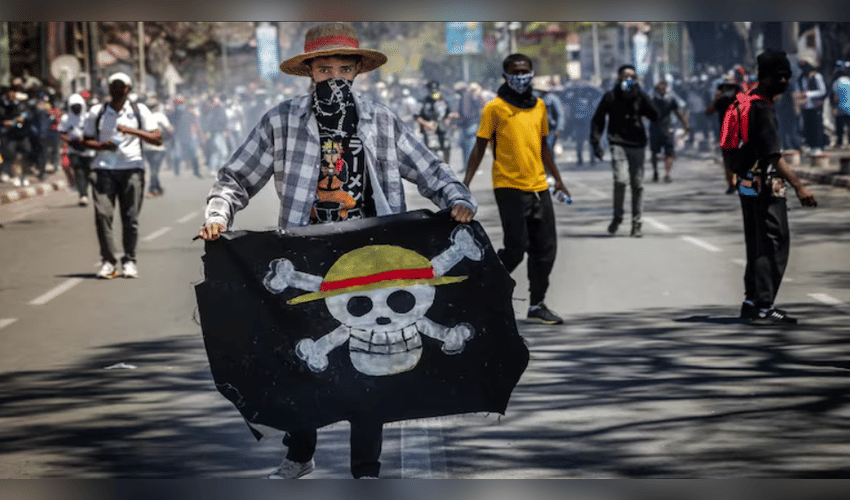Asia In News
Gen Z Global Protests 2025: Nepal, Peru, Morocco, Madagascar Uprising

In 2025, young people born in the late 1990s and 2000s, collectively known as Gen Z, sparked waves of protests across the globe, challenging governments over corruption, unemployment, and crumbling public services. From the streets of Nepal to the capitals of Peru, these decentralized movements used social media and shared cultural symbols, like the "One Piece" pirate flag, to unite and mobilize, achieving significant political impact.
In Nepal, protests erupted in September after the government banned platforms such as YouTube, Facebook, and WhatsApp. Outrage over elite corruption and glaring wealth inequalities led thousands of students and young workers to march on the parliament in Kathmandu. What began as peaceful demonstrations quickly turned deadly, with tear gas, rubber bullets, and live fire claiming dozens of lives. By November, demands had expanded to include police accountability, job programs for graduates facing 20% unemployment, and investigations into abuses. Online voting eventually helped install an interim leader, highlighting the digital-savvy approach of Gen Z activism.
Madagascar saw youth-led demonstrations against chronic blackouts and water shortages. Starting in late September, urban protesters in Antananarivo were soon joined by unions and even mutinous soldiers. Using TikTok lives and diaspora networks, they amplified calls against poverty and elite enrichment, forcing President Andry Rajoelina to flee by mid-October. Yet the military transitional government faced criticism for recycling old insiders, underscoring how digital organization outpaced traditional state control.
In Morocco, the Gen Z 212 movement mobilized young people against government spending on the 2030 World Cup while schools and hospitals deteriorated. Mass rallies in Casablanca and Rabat demanded Prime Minister Aziz Akhannouch’s resignation, better social services, and anti-corruption measures. Youth-driven campaigns, amplified by music and online trends, won some concessions despite violent crackdowns that led to arrests and deaths.
Peru’s Gen Z activists took to the streets to challenge rising crime, pension cuts, and political instability, toppling scandal-hit President Dina Boluarte in October. Clashes continued against her successor, José Jerí, as informal workers and students pushed for broader reforms, including dissolving Congress. The death of a popular rapper during protests intensified public outrage, demonstrating how local grievances can fuel nationwide movements.
Across these uprisings, digital tools such as Discord votes, viral symbols, and live streaming enabled rapid, borderless mobilization. In regions where more than 60% of the population is under 25, Gen Z activism is redefining the political landscape. While some movements achieved leadership changes, others won reforms under repression, setting the stage for Gen Z’s influential role in upcoming elections in 2026.



